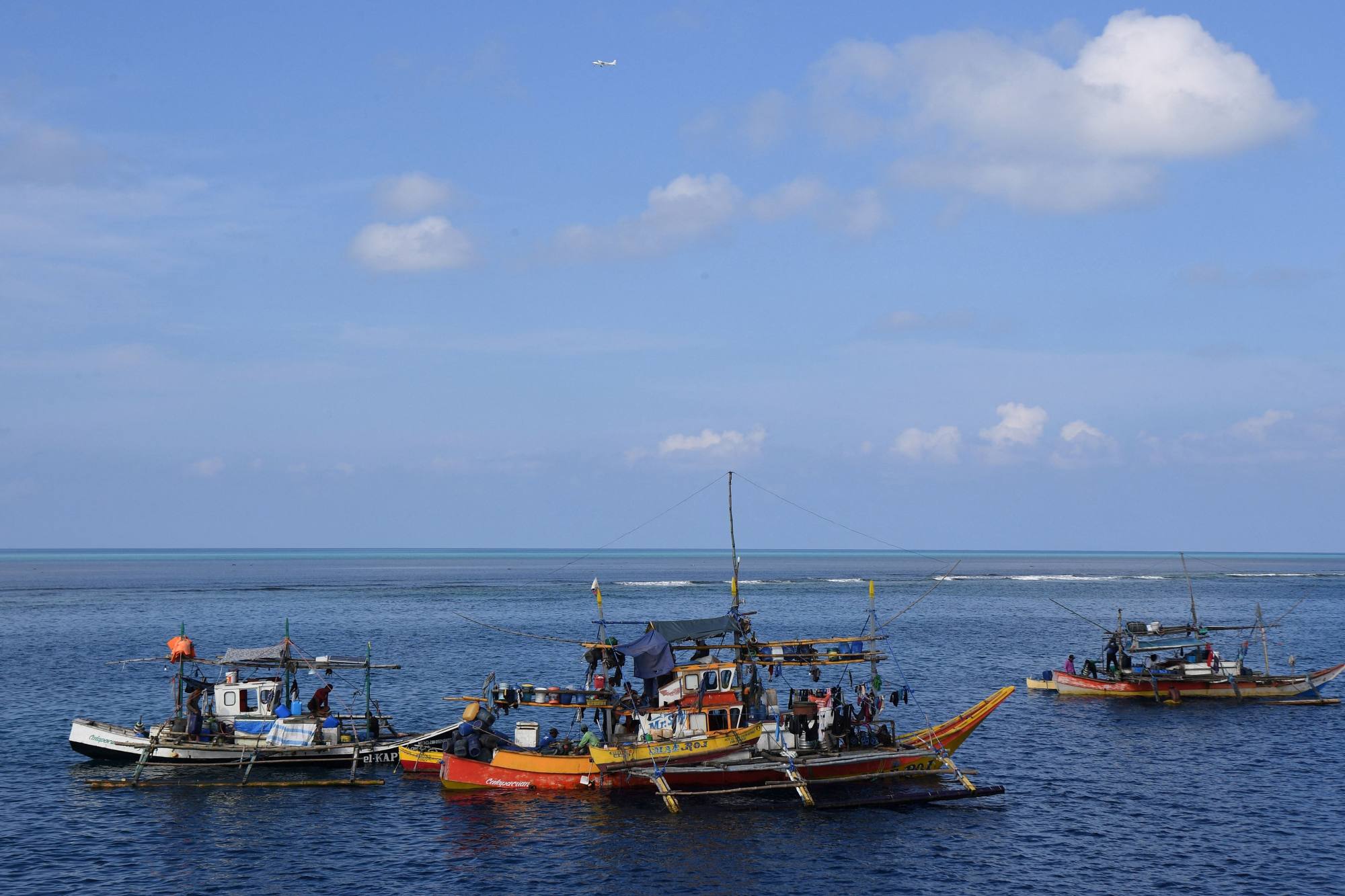
Philippines removes Chinese barrier at contested South China Sea shoal
- Manila earlier said action would be taken ‘to protect the rights of our fishermen in the area’
- Beijing had defended the cordon, saying ‘necessary measures’ were taken after boat ‘intruded’
“The barrier posed a hazard to navigation, a clear violation of international law. It also hinders the conduct of fishing and livelihood activities of Filipino fisherfolk,” the coastguard said, calling the shoal “an integral part of the Philippine national territory”.
Philippine national security adviser Eduardo Ano had earlier on Monday said action would be taken to get rid of the 300-metre (980-foot) barrier “to protect the rights of our fishermen in the area”.
Beijing had defended its move, accusing the Philippines of worsening tensions by deploying a government boat that it said “intruded” into waters off the shoal “without permission” and tried to enter the lagoon on Friday.
“The China Coast Guard took necessary measures in accordance with the law and exercised professional restraint in blocking and driving [the Philippine vessel] away,” foreign ministry spokesman Wang Wenbin told reporters in Beijing.
Manila and Washington work together to deter China with military upgrades
Hu Bo, director of Beijing-based think tank the SCS Strategic Situation Probing Initiative and the Centre for Maritime Strategy Studies at Peking University, said the barrier might have been a “temporary measure” to stop Filipinos from fishing in the area.
“This is part of China’s long-standing policy on Huangyan Island,” Hu said, using the Chinese name for Scarborough Shoal.
Beijing blocked Filipino fishers from entering the lagoon after it took control of the uninhabited shoal following a tense maritime stand-off in 2012 – prompting Manila to take Beijing to an international tribunal over its territorial claims in the South China Sea. The tribunal ruled in 2016 that Beijing’s claims to most of the waterway were invalid, but Beijing rejected the ruling.
Philippine fishing boats have been allowed to return to Scarborough Shoal since late 2016 after then-Philippine president Rodrigo Duterte visited Beijing and ties improved.
But even though the boats were given access to waters near the shoal, “they were never allowed to fish in its inner lagoon”, according to Hu.

A triangular-shaped chain of reefs and rocks, Scarborough Shoal is the largest atoll in the South China Sea with a lagoon spanning about 150 sq km and abundant marine resources, making it a prime fishing area.
China has claimed Scarborough Shoal as part of its ancestral territory since the 1300s. Manila made a claim to the shoal as its exclusive economic zone (EEZ) in 1997, under the UN Convention on the Law of the Sea. The shoal is located some 220km from the Philippines and nearly 900km from China.
It is also close to the Bashi Channel, gateway to the Pacific Ocean, giving it strategic importance to China, the Philippines and the United States, which has maintained a military presence in the region for decades.
Hu said it was unlikely the US would directly intervene in the latest row between China and the Philippines. “The US didn’t take any action in 2012 [during the stand-off] and I don’t think it will do so this time.”
How Beijing is using ‘fishing militia’ to assert its claims in the South China Sea
But Chen Xiangmiao, an associate researcher with the National Institute for South China Sea Studies on Hainan Island, disagreed, noting that the stakes were high because of the shoal’s geopolitical significance.
“I think the possibility is quite high that the US may step in if the situation continues to escalate,” Chen said.
Washington and Manila are set to begin joint patrols in the South China Sea later this year, while US officials including defence chief Lloyd Austin have pledged to defend Philippine vessels if they are attacked in the waterway.
Dai Fan, an associate professor and director of the Centre for Philippine Studies at Jinan University in Guangzhou, said the recent confrontations were “unusual” and there could be more to come.
But he said Beijing should be careful to avoid the situation turning into a wider conflict. “Behind the Philippines there is Asean, and we need to avoid any escalation that would hurt China’s overall relations with the region.”


